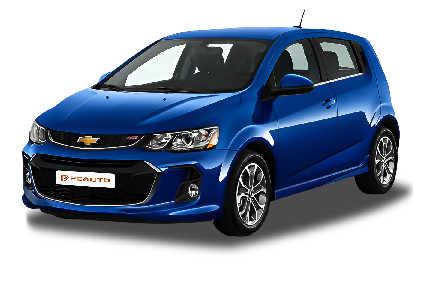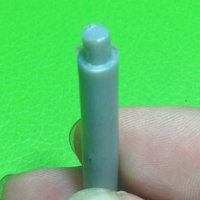

Reference Only. Update Soon
2014 Chevrolet Sonic Hatchback
Price
RM 94,486
Summary
Core Specs
Highlights
Common Problem
Other Variants
Resale Value
Dealers
Related Q&A
Summary
The 2014 Chevrolet Sonic Hatchback, launched in (-, is a smart-choice - Hatchback priced from RM 94,486. Fits - passengers with generous cabin space – check the dimensions: -mm L, -mm W, -mm H. Perfect if you need a family car that parks easily.
Enjoy stress-free highway driving thanks to its -km/h top speed. Its -cc engine balances pep and efficiency. For a reliable daily driver that doesn’t break the bank, the 2014 Chevrolet Sonic Hatchback delivers style, space, and sensible performance.
Enjoy stress-free highway driving thanks to its -km/h top speed. Its -cc engine balances pep and efficiency. For a reliable daily driver that doesn’t break the bank, the 2014 Chevrolet Sonic Hatchback delivers style, space, and sensible performance.
Core Specs
Segment
-
Engine Capacity(cc)
-
Transmission
-
Fuel Comsumption (L/100km)
8.1
Fuel Tank(litres)
-
Top Speed(km/h)
-
Seats
-
Length(mm)
-
Width(mm)
-
Height(mm)
-
Wheelbase(mm)
-
Boot Volume(L)
-
Other Variants
Price
RM 94,486
Body
-×-×-
Engine Power(PS)
-
Engine Torque(Nm)
-
TRANSMISSION
-
Fuel Consumption
8.1
Related Q&A
View More >Q
how to calculate co2 emissions from fuel consumption
To calculate the carbon dioxide (CO2) emissions generated from fuel consumption, you can use the following formula:
CO2 Emissions (kg) = Fuel Consumption (liters) × Carbon Emission Factor of the Fuel.
In Malaysia, the carbon emission factors for common fuels (like gasoline and diesel) differ. For example, gasoline produces approximately 2.3 kilograms of CO2 for every liter burned. But it's important to note that this is a rough estimate; the actual CO2 emissions can be influenced by various factors, including engine efficiency and driving conditions. For more precise calculations, professional testing equipment and techniques may be necessary.
 FrostyDec 24, 2024
FrostyDec 24, 2024Q
What is the top speed of the GAC GS3?
The top speed of different models of the GAC GS3 vary. Some models can reach a top speed of 190 km/h,which is competitive among vehicles in the same class, allowing the vehicle to easily reach legal speed limits on highways and meet the demands of fast commuting or long-distance travel. For instance, on sections with good road conditions and light traffic, a higher top speed enables smoother overtaking of slower vehicles. The actual driving speed is constrained by various factors such as traffic regulations, road conditions, vehicle load, and driving habits, so reaching the top speed is uncommon in daily driving.
 GlimmerMay 13, 2025
GlimmerMay 13, 2025Q
How much is Toyota Vios 2024?
The price of Toyota Vios 2024 in Malaysia may vary depending on configurations and regions. Generally, the price of its base model is within a certain range of RM 89,600 to 95,500. However, for the specific price, it is recommended that you consult your local Toyota dealer, who can provide you with the most accurate and latest quotation information.
 CreativeGeniusInnovatorMar 19, 2025
CreativeGeniusInnovatorMar 19, 2025Q
What's the Rim Size of Toyota Yaris?
The rim sizes of different model years and versions of the Toyota Yaris vary. For the 1.5J version from 2021 to 2023 and the 1.5E version from 2019 to 2021, the rim size is 15 inches, and the tire specification is 185/60 R15. For the 1.5G version in 2019, the 1.5E and 1.5G versions from 2023 to 2024, and the G Limited version in 2024, the rim size is 16 inches, and the tire specification is 195/50 R16.
The rim size can affect various aspects of the vehicle, such as its appearance, handling, and tire selection. Large rim can enhance the sporty look of the vehicle, but it may also increase fuel consumption. On the other hand, small rim has certain advantages in comfort.
 TiaJun 25, 2025
TiaJun 25, 2025Q
What's the Fuel Consumption of Honda City Hatchback?
The Honda City Hatchback provides different powertrain versions. The fuel-powered model is equipped with a 1.5L DOHC i-VTEC naturally aspirated engine paired with a CVT gearbox, and its official combined fuel consumption is 5.6L per 100km. On the other hand, the e:HEV RS model uses a 1.5L i-MMD hybrid system, and its official combined fuel consumption is as low as 3.7L per 100km. Fuel consumption can be affected by various factors such as driving style, road conditions, and vehicle load, so there may be differences between the actual usage and the official data.
 GusJun 26, 2025
GusJun 26, 2025Q
Is the GLC a good family car?
The GLC makes an excellent family vehicle. It offers a spacious interior that comfortably seats five passengers, while the 40:20:40 split-folding rear seats provide flexibility for accommodating both passengers and cargo. The generous trunk space easily accommodates strollers, groceries, or luggage for family trips.
In terms of safety, the GLC is equipped with a comprehensive array of standard safety features, including multiple airbags, an anti-lock braking system (ABS), and stability control. Advanced driver assistance systems such as lane departure warning, active braking, and blind-spot monitoring add an extra layer of safety.
Performance-wise, its engine offers ample power for everyday driving and highway merging. The ride quality is comfortable, with a smooth suspension system that adeptly handles bumps and uneven surfaces. The interior is finely crafted, featuring high-quality materials and modern technology. The infotainment system is user-friendly, making it easy to connect devices for entertainment.
However, it's worth noting that, compared to some hybrid or electric vehicles, the GLC may have relatively higher fuel consumption. Additionally, its luxury positioning may result in higher maintenance and insurance costs. Overall, weighing its pros and cons, the GLC is a strong choice for families seeking a comfortable, safe, and stylish vehicle.
 DipMay 14, 2025
DipMay 14, 2025Q
how to connect bluetooth in honda city 2020
To connect Bluetooth in the 2020 Honda City:
1. Turn on the vehicle's power.
2. Find the Bluetooth settings option in the vehicle's infotainment system, which is usually located in the main menu.
3. Once you enter the Bluetooth settings, enable the Bluetooth function on your phone and search for the device name related to "Honda City" in the Bluetooth device list on your phone, then click to pair. You may need to enter a pairing code, which is typically "0000" or "1234."
4. After pairing is complete, your phone will be successfully connected to the vehicle's Bluetooth system, allowing you to make calls, play music, and perform other functions.
 ExplorerJan 15, 2025
ExplorerJan 15, 2025Q
Does the Xiaomi SU7 qualify for EV incentives in Malaysia?
Xiaomi SU7 has not yet been launched in Malaysia, so it is uncertain whether it has electric vehicle incentive policies or not.
 GentleSpiritSootherFeb 8, 2025
GentleSpiritSootherFeb 8, 2025Q
How to Caculate BYD Atto 3 Loan? Grasp the Idea Here
To calculate a car loan for the BYD Atto 3, you’ll need to consider the vehicle price, down payment, loan term, and interest rate. Let’s take a typical example in the Malaysian market
Suppose the Atto 3 is priced at RM150,000. With a 10% down payment (RM15,000), the loan amount would be RM135,000. If you choose a five-year loan term (60 months) at a bank interest rate of 3.5%, the estimated monthly repayment would be around RM2,450. This is based on the standard loan formula that considers the monthly interest and the total number of payments.
Keep in mind that actual rates and monthly payments may vary depending on your credit score or specific bank promotions. It’s always a good idea to check with your bank or dealership for the latest loan options.
On top of the car price, you should also budget for additional costs like insurance, road tax, and processing fees. These can significantly affect your total spending.
Car loans in Malaysia usually offer flexible repayment terms, up to 9 years. However, longer terms come with higher total interest, so it’s best to choose a repayment plan that fits your financial situation.
Since the BYD Atto 3 is an electric vehicle, it may qualify for government tax incentives, such as exemptions on import and sales taxes. These incentives help reduce the overall cost, so be sure to check the latest EV policies before making a decision.
 CloeJul 7, 2025
CloeJul 7, 2025Q
Which country is Toyota Rush made in?
The Toyota Rush is manufactured in Japan. As a globally recognized automotive brand, Toyota is headquartered in Japan and is renowned for its robust research and development and production systems. The Toyota Rush is produced in Japan's advanced factories, adhering to Toyota's stringent quality control standards to ensure that each vehicle meets high-quality benchmarks. From the careful selection of components to the assembly and inspection of the finished product, the entire process is meticulously structured.
In the Malaysian market, the Toyota Rush has gained popularity among consumers, thanks to its reliable performance, comfortable driving experience, and practical space layout. This makes it an excellent choice for those seeking good driving experience.
 FixerToolRepairMay 23, 2025
FixerToolRepairMay 23, 2025